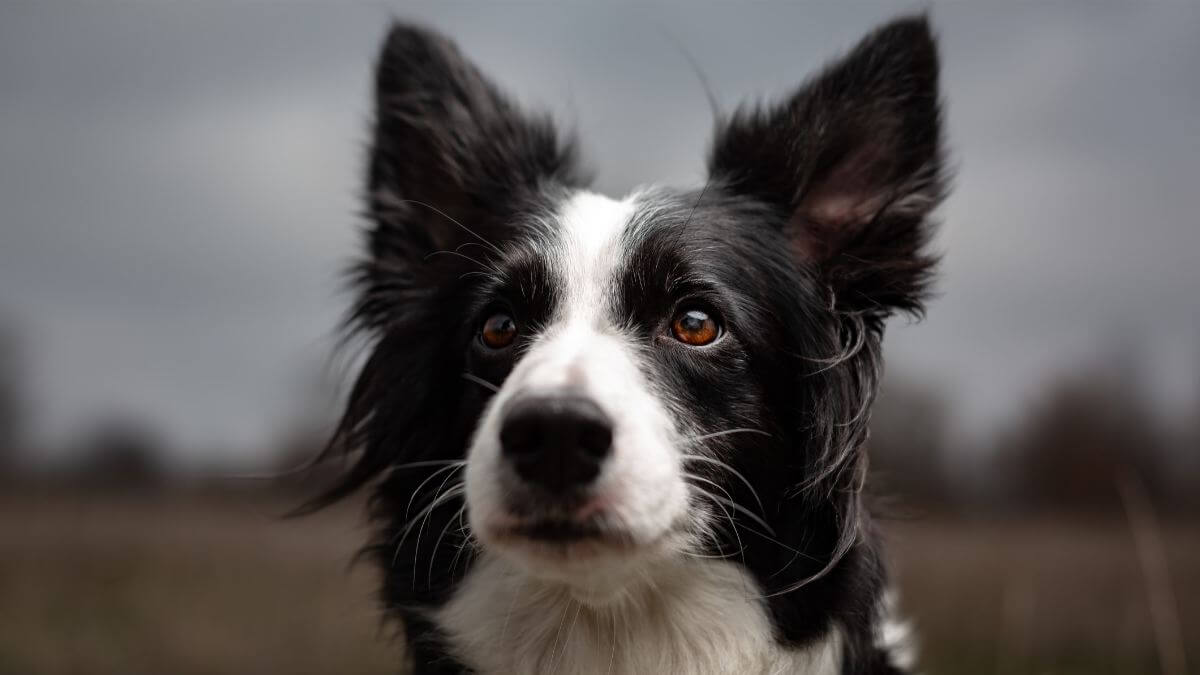
Home » Judging the Border Collie in the Show Ring

This article was originally published in Showsight Magazine, June 2014 issue.
When evaluating Border Collies in the show ring against a Breed Standard, the qualities that make the Border Collie the world’s premiere sheep herding dog should be considered of primary importance.
Border Collies’ working style is different and unique from other herding breeds. Specifically, Border Collies use “eye” to control the stock. All Border Collies have some degree of eye, the amount depending on what lines they come from.
When using their eye to move livestock, Border Collies lower at least their heads, and often the entire front portion of their bodies, into a creeping or crouching position. Border Collies have the ability to drop to the ground instantaneously, which is called “clapping.” Additionally, the amazing stopping, turning, and general agility of the breed is unsurpassed.
It is only after the dog can meet the physical standards required for its job should other, non-functional traits be considered. But some of the things that may be thought of as “cosmetic” actually have a working purpose. Pigmentation is one example—a well-pigmented dog is less likely to suffer sunburn. Whiskers should remain untrimmed because they help pick up the scent of sheep that are out of sight. Even the white tip on the end of a tail carried in an upward swirl has a purpose. It is known as the “shepherd’s lantern” because many times the tip of a tail would be all that would lead the shepherd home in the dark after a long day’s work.
Herding instinct and ability cannot be assessed in the conformation ring, but the physical qualities that enhance the dog’s ability to work can. For instance, only a dog with a well-angulated, sound front will be able to crouch in true Border Collie fashion. This posture also requires the scapula to be further apart when the dog is standing than many other breeds. Because of the need for agile, fast turns, the Border Collie’s length of body should be primarily in the ribcage, not in a long loin which might be susceptible to injury. Border Collies must have moderate, oval bone—light enough for speed, but substantial enough for stamina.
Border Collies historically come in four distinct styles. In her classic treatise, Key Dogs from the Border Collie Family, Sheila Grew identified four individual types within the Border Collie breed. The types are divided by physical looks, but general working style and temperament also seem related to type. She called them: 1) Northumbrian type; 2) Wiston Cap type; 3) Nap type; and 4) Herdman’s Tommy type. The AKC breed standard was purposely written to be broad enough to include all four. No one style is preferred over the others. This can be confusing to those who are unfamiliar with the development of the breed. Regardless of its particular style, it is the judge’s job to pick the best representative in the ring that day. A final lineup that includes a variety of styles does not mean the judge doesn’t know what he or she is doing. Instead, it reflects judging that respects the range of variety acceptable in this breed. Only when two dogs are of equal quality should a judge choose based upon any personal preference for one style over another.
Having four historically distinct styles does not mean that breed type should be ignored. When a judge is standing in the middle of the ring looking at a lineup that has just come in, there should be no question that the dogs are Border Collies. If one has to look for a tail to determine whether a dog is an Australian Shepherd or a Border Collie, breed type is lacking. In addition to head and body shape, one of the most important aspects of breed type is movement. Some dogs manage to look great on the stack, but fall apart when moved.
Head carried low. Many judges reward fast and flashy movement. This is incorrect. Efficient movement is imperative because these dogs must be able to cover miles of rough terrain daily.
A properly moving Border Collie seems to glide or float as it covers the ground smoothly and effortlessly. This is described in some countries’ breed standards as the ability to move with “stealth.” Although stealth is often associated with the crouch that Border Collies use when approaching livestock, it is also apparent in the free-flowing movement when the dog is being gaited in the ring.
When viewed from the side, the trot covers the ground effortlessly with minimum lift of feet. The topline should be firm with no roll or bounce. Front reach and rear drive are symmetrical, with the front foot meeting the ground directly under the nose and the rear foot pushing back without kicking up. When the rear foot is coming forward, it should reach the spot just vacated by the front foot. This easy facility of movement is a hallmark of the breed.
Even though some Border Collies may never see sheep in their lifetime, they should still have the physical attributes necessary to perform their original function as working sheepdogs. Breeders, exhibitors, and judges each play an important role in the quest to respect and maintain that heritage.